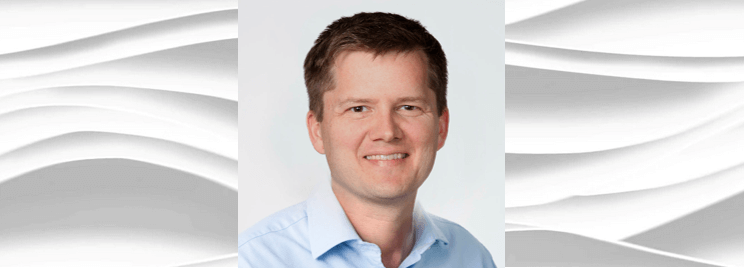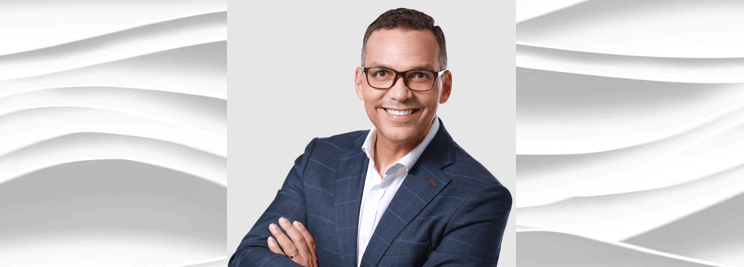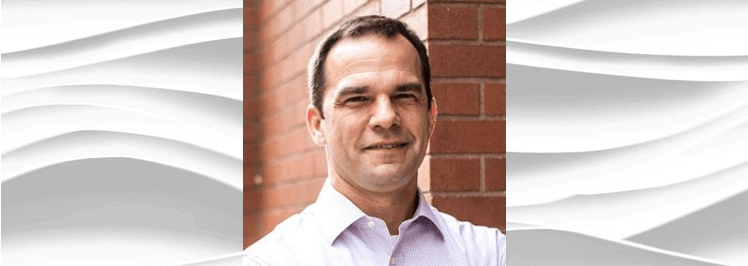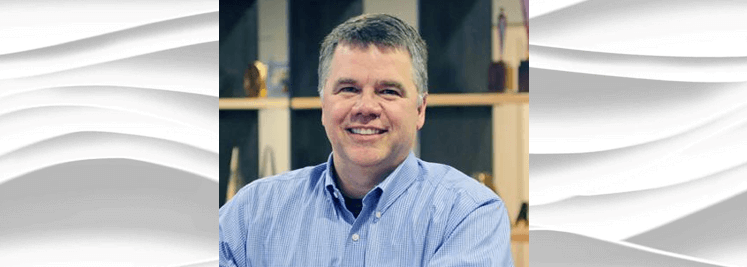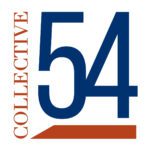A boutique requires different things from its leaders and partners as it scales. On this episode, Peter Bilello, President & CEO at CIMdata, shares his journey as a non-founder to becoming President & CEO. He will dive into how he championed the culture shift to drive scale and put the firm in a position to be able to sell one day.
TRANSCRIPT
Greg Alexander [00:00:15] Welcome to the Boutique with Collective 54, a podcast with founders and leaders of boutique professional services firms. For those that are not familiar with us, Collective 54 is the first mastermind community dedicated exclusively to helping you grow, scale and exit your pro server. My name is Greg Alexander. I’m the founder and I’ll be your host today. And today we’re going to talk about stakeholder alignment and how difficult that can be at times when you’re attempting to scale and maybe someday sell your firm. And what I hope with the help of our role model is discuss ways to do this from a non founders perspective. We have really two kind of broad people that are in our community. We’ve got founders of boutiques and our founders and I was one of them have a certain profile and then we have presidents slash CEOs who took over founders at some point and are growing, scaling and selling those firms. And they have a different perspective. And we’re going to hear from Peter Bilello, who is a member of Collective 54. He’s our role model tonight and is someone that is in that category as the CEO non founder, if you will. So, Peter, would you please? Well, first, welcome to the show and you introduce yourself to everybody.
Peter Bilello [00:01:35] Thanks. Happy to do that, Greg. Peter Bilello, CIMdata President and CEO. CIMdata is a boutique firm, of course, in the area of product lifecycle management. But we told people that this is where global advantages were global because we have the travel last two years hasn’t been as much travel, but it’s definitely cranked up again. And as a company, we do management consulting work across companies that make just about anything, anywhere. And as a company, we’ve done work in about 50 countries, and I’ve been on six of the seven continents.
Greg Alexander [00:02:07] And where are you today, Peter? It sounds like maybe you’re one of those.
Peter Bilello [00:02:11] I’m in northern Germany today. I traveled from India yesterday, and I’ll spend a couple of days here and then go back to the States. But I was in India and a couple of weeks ago was in India and that trip ended a week or so in the Netherlands, so you never quite know. But then I’ll be home for a couple of weeks and go back to India again.
Greg Alexander [00:02:29] Well, you’re a great member and thanks for squeezing us into that very hectic international travel schedule. Peter, I’d love to hear a little bit about your personal journey because as I mentioned in the intro, you’re the CEO of the firm but are not the founder of the firm. I’d love to hear when you took over and who you took over from and what and how all that happened.
Peter Bilello [00:02:49] So give a little bit of background. The organization itself was founded in 1983 by three gentlemen. Two of them I never met. The third one was the chair chairman when I joined the company in the late 1990. So 97 or so when I joined the organization and I came on board as a senior consultant. I had already a number of years in industrial experience in the area of product lifecycle management, what we call today and became at some point, because my background in system integration work and large scale projects, I became our director of consulting services for industrial companies. We work with industrial companies and with software providers and service providers. And then by the present at the time was not a founder either. But we reported to the chairman, of course, the chairman passed away back about 20 years ago, and I was made vice president by the CEO at the time or president we would call him at the time. And then he passed away, unfortunately, about 12 or 15 years ago now. And I was promoted to president and then netted the title about three or four years ago of CEO, as we’ve recognized the expansion of the business and also the the way we present ourselves as an organization. So it’s been a progression, as, you know, starting as a senior consultant, moving into director position, moving into vice president and then president. I think if the previous president had not passed away, probably by this point, I would be president. He would be chairman. What we ended up doing is doing some restructuring after he passed with responsibility. Our one of the other nine can not founders because the other founder. Passed away as well. So we haven’t had a founder in the organization for about 15 or 20 years. But most of my colleagues, like the chairman, has been with the company since 1990. CFO A little bit less than I’ve been. I’ve been 25, 26 years. CFO About 24 years or so. And there’s a few others, you know, ten, 15 years with the organization. But they’ve shifted from the founder’s role.
Greg Alexander [00:04:51] You know, you’re working too hard. The two previous leaders both passed away. I hope that doesn’t happen to you.
Peter Bilello [00:04:56] Well, there were some of those circumstances. The first one was 96, so I’m okay with that. Second one was quite a bit younger. But, you know, significant health issues that it was he lived a lot longer than his siblings, but it still was a young life, unfortunately.
Greg Alexander [00:05:11] Yeah. Well, all right. Well, I wanted to talk to you about culture, stakeholder alignment, particularly, as, you know, you try to get you try to drive scale of the storm. But a firm like yours has been around a long time. The leader in that space and maybe put yourself in a position to sell something the challenges associated with that. So would you mind sharing some of that with us?
Peter Bilello [00:05:36] Yeah, one of the one of the key challenges I’ve had is with some of the ones that have been around for a long time. You know, they, you know, great, great people, great experience, great now. But they have historically seen a company as a group of individuals, even though we’re a C Corp and we manage like a C Corp for quite a long time, but it was still more of a, I want to say, club or a pyramid. I mean, as you know, a lot of founders kind of run things and they don’t look to scale. So that was probably the biggest challenge is getting people to realize that scale is important and to develop out the way we manage, the way we’re structured, not just adding cost because that was attempted in the past, it did not work well, but adding structure for repeatability and scalability. And it took some time to convince some of the ones who’ve been around for as long as I or longer than me, that we actually have to shift and change because it’s better for us, not just today, but it would be better for us if there was ever an exit.
Greg Alexander [00:06:37] So how do you get old dogs to do new tricks?
Peter Bilello [00:06:41] Give them some responsibility that they didn’t have before. Show them other examples. You know, it’s going to be organizational change one on one, right. Get get them to understand why they should care about it. What does it mean to them? The remember the days when it was feast or famine. You know, getting them to remember how difficult the pain is during, you know, early phases that we had for a long time. And we didn’t go the five years and try to start the company when for probably about 20 years in that feast or famine mode, because we weren’t scaling. We weren’t doing the things that were necessary to produce repeatable revenue and other streams that we really need. So again, education is probably the key to that, just like any other organizational change and then giving responsibility and some accountability as well, which was. Lacking the organization, which still, even though was formed as A and C Corp. The structure was more based on individuals selling and delivering, so it was really more of a a collaboration among individuals rather than a organizational structure that created roles and responsibilities. So. One of the things he did very early on is actually develop a role as a responsibility definition that didn’t exist. We had people that had different roles and responsibilities in theory, but nothing was defined. So that was another element that had to be done to give greater appreciation to those that have been around as long as me or longer that what we were trying to accomplish in. I was valuable to them to be on board and virtually all of them bought into it. We didn’t have to lose anyone, any of the ones that have been around as long as I have and longer Allstate and they have they’re more plugged in, they’re more focused and they have it. We all have a better understanding of what the vision is for the organization instead of just getting together and. You know, selling something, delivering something. It’s a bigger picture about building something. Not just as individuals, but as an organization.
Greg Alexander [00:08:34] You know, a question that I’m going to ask on behalf of the members, because I know when they listen to this and when they get to the Friday Q&A, they’re going to ask this question. When you ask, you know, senior people that have been around a long time to do, quote unquote, firm building activities that don’t necessarily drive personal ability, could be perceived as taking a hit to personal compensation. Did you have to make any adjustments to the program?
Peter Bilello [00:09:03] But actually, it’s funny you ask that. We dismantled. What’s what? What happened is we had, like, three phases. We had one that was, you know, eat what you kill. And everyone was basically commissioned based. So you were selling and you were delivering. There was no business development. So we took that away basically, and created a business development group as one of the first business practices that we created. So that changed the way people were getting paid, but it was also getting people more focused on what they did, and that helped actually. So people have a more consistent pay actually than before. But then so that’s one change we did. But there was an interim period where previous management team thought we had to put in a pay structure, which on one hand you do in order to gain access to other people that wouldn’t come if it was all pay for what you do. And but unfortunately that was done without actually understanding where the money was going to come from. And it, quite frankly, put a big dent in the ability to go invest in anything in the organization and create a lot of debt, which, you know, we’re all totally paid off and actually have quite a bit of money in the bank now. But that took quite a number of years. It was almost it was about a ten year period of just dealing with debt, which we were able to out come out of last three or four years now. So we first thing it did is I killed that structure, totally went back to partially to the pay for what you do, but restructured it because I added a business development team in so that people weren’t so keen on just selling and delivering their own stuff. But you know, we had a group just selling and then groups just delivering. So while we did minimize any kind of base salaries for senior level people, we didn’t. So we all create the debt by having it and having people do anything. But we removed their responsibility for selling so they can actually do what they really enjoy, which is delivery. So the number of changes we made.
Greg Alexander [00:11:01] That’s a great story. Of course, it sounds like it was painful for you to go through that ten years of dealing with debt. That’s a big burden. Unfortunately, I hear this all the time. So I’m glad that you’re sharing that with us because, you know, part of the reason to learn from peers is to not repeat mistakes others have made. You know, when you peak ahead to possibly exiting the firm someday in any form, that that may happen. How do you get all these people on the same page?
Peter Bilello [00:11:27] Well, we have had discussions in recent years about what does it mean, what what’s the criteria? Let’s say we’ve gone through some analysis as well. We have a reasonable understanding of what we’re probably worth. There was a look through the acquisition a couple of times in the past one well around the time I joined or a year or so out there, and I know what figures they were looking for and the figures were ridiculously high. So it never went through. After the president, the last president passed away, people approached us, but they didn’t understand what we did. And we never got to the point where there was an offer. But in recent years, you know, there has been some inquiries. So we did some decided to do some due. Allegiance. But three years ago, to understand tangible value, not tangible assets, tangible assets, all those types of things to understand what could possibly worth. And we probably have a better understanding of what value is and how we would position ourselves. But then there’s other things that people think are really important to that still kind of working through. For example, some may say, well, the only way will sell is that the name stays. Well, I, I could care less if the payments. Right. I don’t care what they call the company. It’s kind of irrelevant to me. So again, we’re site we’ve done some prioritization there. But again, there are some people that are more attached to certain things than I probably should be. And I like your story about, hey, you don’t even you stepped aside and let people go figure out what things are worth and everything. And not because we get so emotionally tied to things. And there are some. Some of my colleagues are still emotionally tied. I hope I’m not I hope any of the factors are right. Then we would go do it because it’s the right thing for us to do.
Greg Alexander [00:13:10] Yeah. Alright Peter, my last question is for the group of members and at Non-Filers, maybe they’re working with the founder, they’re handling that founder transition, having been somebody who’s come up through the ranks, so to speak, and has had several promotions and ultimately landed in the top spot. Any any words of wisdom to that group? Anything that if you were to do it over again, you would do differently?
Peter Bilello [00:13:38] Do differently? Probably not, because as I’ve gone along, I’ve besides getting more responsibility, I’ve got more ownership, which I wouldn’t have done if it wasn’t for the ability to go get something at the end. Now, quite frankly, I don’t really care if if I exit. I mean, I’m happy with what I’ve been doing. I have the flexibility. I want to have a lot of other benefits. Being in a boutique that we all know about and getting paid, paid as I want and so on to get the cash out at the end. Yeah, I wouldn’t mind doing that if it’s the right situation for the organization. It’s not about me, it’s about the organization. And we did our acquisition a few years ago and the founder of that company came to me and said, I want to find a place for my people. And I thought that was a nice, a nice thing to do and it was a great opportunity. Didn’t cost as much, but we got a number of really good resources, which we still have to to this day, that type of thing. And it was a fire sale because he was he was dying, unfortunately, and he wanted to fight. It was nice that he found it to find a nice place for his people. We’re not in that situation. I hope we’re not never in that situation. So if we were going to be acquired, then it has to be the right fit and the right pay out all the wonderful things that could go along with that great kind of connection. But, you know, I would I would do the same thing I did before, as you know. Get the right type of ownership, the right type of control and the right type of people around you. When the previous president passed away, we decided what as a group of a few of us that were already owners, how would we split that up? Because it would start coming back into the company. How would we divide that up? And I got quite a bit of increase, so I have a reasonable share of the company. We have a stock plan, though, that no one can have more than 50% of the company, actually, no, 49 and a half or whatever it is. But I have my fair share, my other two other colleagues that have their fair share, and then there’s two others that have a small share. So that to me, that’s important. I was always simple and it still is important in order that one have control and the other one has to have not just control, like from a role of responsibility perspective, but also from an ownership perspective. I really honestly can’t think of what I wouldn’t do. Maybe, you know, the ten years were painful and they had very little ownership at the time and very little responsibility. But I think in the end I still had the flexibility that I wanted to have. So it was okay. I could look for other job and probably gotten paid more at the time, but I still wouldn’t know how to. Much fun and hard to control that I have to this day.
Greg Alexander [00:16:10] Yeah. Alright well listen, I thought you would try to keep these shows short, so we’re at our time here, and I know that it’s probably late in the evening where you are. So on behalf of the members, this is a really interesting subject to hear from somebody like yourself who did not found the firm but is running the firm and that generational story that you share with us, getting stakeholder alignment was really important. So thanks a bunch, Peter. I appreciate it.
Peter Bilello [00:16:33] Alright, you’re welcome.
Greg Alexander [00:16:36] Okay. So for those that are in professional services that are listening to this, I want to belong to a community and meet really interesting people like Peter. Consider applying to Collective 54 and you can a Collective54.com. And if you want to read about this subject and others, you can pick up a copy of my book, The Boutique How to Start Scale and Self, a professional services firm. You can find that on our website Collective54.com or you can buy it on Amazon. Thanks for listening and I look forward to our next episode.





